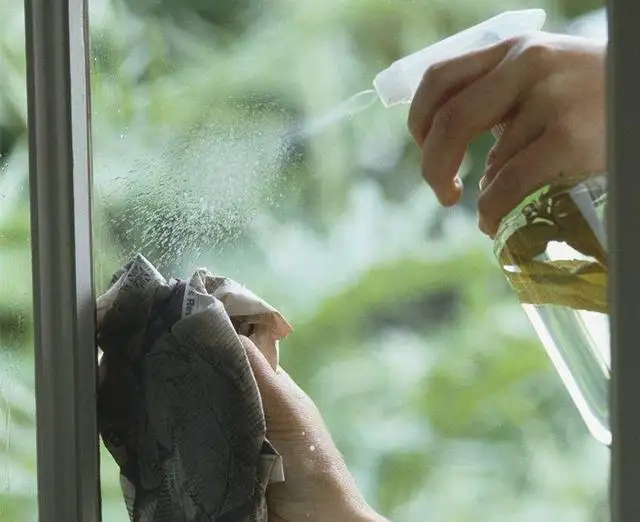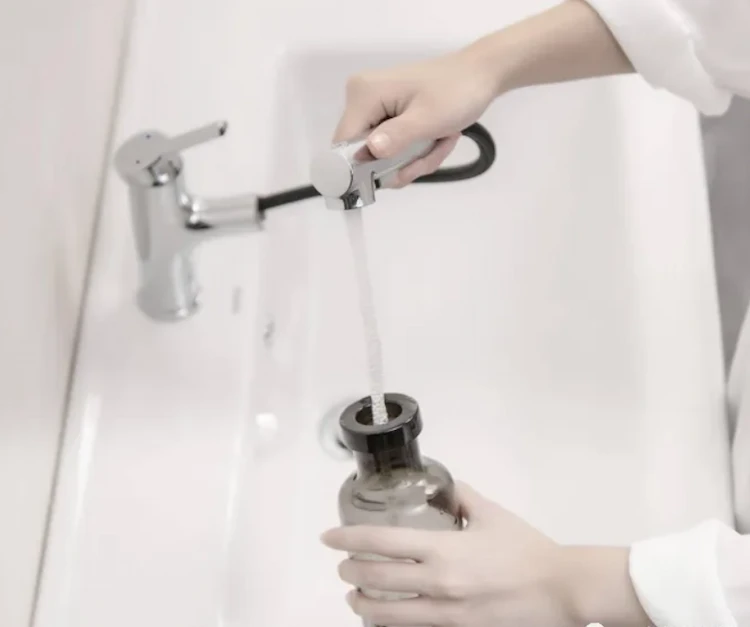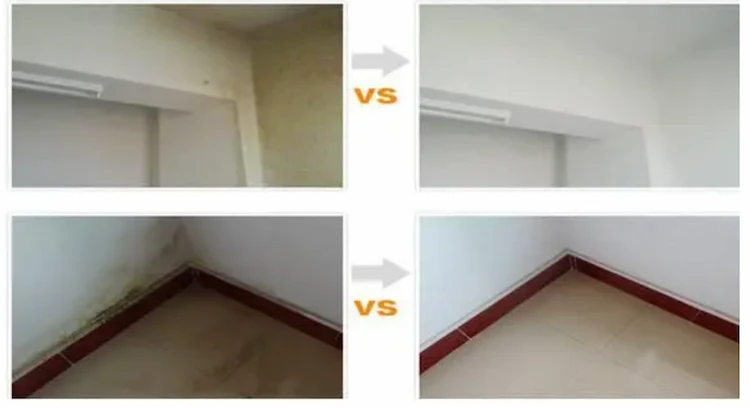This article uses seven ways to prevent mold and mildew in the bathroom to help clean and remove odors from your bathroom.

Bathroom walls are mostly paved with tiles, in order to keep it clean and bright, you can use multi-purpose stain removal cream for cleaning. As for the tile crevices, you can first use a toothbrush dipped in a small amount of stain removal cream after descaling, and then brush a waterproof agent in the crevices with a brush. This can not only prevent seepage, but also anti-mold growth.

Clean mirrors and windows can become blurred with water marks due to long term close contact with water. Available spray glass cleaner in a whole glass spray a large X-shaped, and then fold the wrung-out rag, wipe a circle in one direction, wait until the glass is seven minutes dry, then wipe again with a dry cloth. Also available old newspaper wipe, the ink of the paper can make the glass shiny as before, but also can be stubborn dirt and wipe away.

Faucet (shower) will often be stained with a variety of shower gel, shampoo, detergent, etc., these detergents will make the faucet chrome-plated surface becomes lusterless.
You can take a neutral cleaner sprayed on a soft cloth and gently wipe the faucet once a week. Do not use acidic or abrasive cleaners, wire brushes to “torture” the faucet.

First, put the right amount of water in the toilet, take the toilet brush to clean it again, then pour about 5 to 10mL of detergent or hydrochloric acid solution, use the brush to coat evenly after brushing, such as heavy dirt, you can pour a little more detergent to soak after brushing until clean, and then flush with water to clean.

There is a convenient and environmentally friendly way to clean sanitary ware, which is to use white vinegar and lemon peel. Scrub the surface of the sanitary ware first, then use a soft cloth dipped in a little white vinegar to wipe the surface of the sanitary ware or wipe with lemon peel, just a moment of time, the sanitary ware will be shiny as new, but also emit a fresh fragrance.

Today’s popular “negative ion” air, you can keep some shady plants, you can also buy a kind of oxygen bar tiles, a mural-like oxygen bar tiles can play the same role as plants to refresh the air, and do not have to take care of, and can decorate the bathroom, so that the bathroom to become an “oxygen bar “, it may be worth a try.
Many varieties of air fresheners on the market, you can choose according to their preferences. Imagine, when guests use the bathroom equipment in a light fragrance, while listening to relaxing music, the mood will be how relaxed and comfortable.
In addition, the simplest way to purify the air in the bathroom is: a cup of balsamic vinegar or a box of open cap cool oil in the bathroom, the odor will disappear naturally.
Mold in the bathroom ceiling is a common occurrence in many homes. Understanding what causes it is the first step in prevention and removal.
Inadequate ventilation traps humidity, creating a suitable environment for mold growth.
Water leaks from plumbing can lead to mold growth in the bathroom ceiling.
Neglecting to clean the bathroom regularly allows for accumulation of moisture and mold growth.
Certain materials absorb moisture more easily, facilitating mold growth.
High humidity weather conditions can lead to increased moisture and mold growth in the bathroom.
Poorly functioning exhaust fans fail to remove humidity, leading to mold.
Understanding the causes of mold in the bathroom ceiling helps homeowners take preventive measures.
Removing bathroom mold is vital for maintaining a healthy living environment. Here’s how to get rid of it effectively.
Recognize the type of mold to determine the best removal method.
Use brushes and sponges to scrub the mold away.
Wear protective gear such as masks and gloves.
Keep the bathroom dry and clean to prevent future mold growth.
Sometimes professional help may be necessary for complete mold removal.
Getting rid of mold in the bathroom requires a systematic approach, proper tools, and regular maintenance.
Concerns about the dangers of mold in the bathroom are common and valid.
Exposure to mold can lead to respiratory issues and allergies.
Not all molds are harmful, but black mold in the bathroom wall can be particularly hazardous.
Long-term exposure to mold can lead to more serious health issues.
Children and the elderly may be more susceptible to mold-related health problems.
Regular inspections can help in early detection and removal.
Utilizing proper ventilation, regular cleaning, and moisture control can prevent mold growth.
Though not all molds are dangerous, understanding the risks associated with bathroom mold and taking appropriate preventive measures is essential for maintaining health and safety.
Recognizing the signs of mold in the bathroom is the first step in tackling the problem.
Seeing mold spots on walls, tiles, or ceiling is a clear indication.
A musty smell often accompanies mold growth.
Water stains or peeling paint may indicate underlying mold.
Unexplained allergies might be linked to mold exposure.
Mold may also grow in hidden places like behind tiles or under sinks.
Professional mold inspection can help detect hidden mold.
Early detection and intervention prevent the spread of mold.
Understanding the signs of mold in the bathroom enables homeowners to act quickly and prevent further damage.
Preventing black mold in the bathroom wall is essential for a healthy living environment.
Ensure that the bathroom is well-ventilated to reduce moisture.
Clean the bathroom regularly to prevent mold growth.
Choose materials that don’t absorb moisture easily.
Promptly repair any leaks to prevent water accumulation.
Using a dehumidifier helps in controlling humidity.
Consider using mold-resistant paint in prone areas.
Taking proactive measures can help in preventing black mold in the bathroom wall, thus ensuring a healthy and safe environment.
The question of whether mold in bathroom ceiling is harmful is commonly asked.
Mold can cause respiratory problems, especially in those with allergies or asthma.
Black mold, in particular, is known to be more harmful.
Apart from health risks, mold can also cause structural damage to the property.
Engaging professionals for inspection helps in determining the type and extent of mold.
Employing the right removal techniques is essential to ensure complete elimination.
Although not all molds are harmful, it’s wise to take necessary precautions and consider professional inspection and removal if needed.
Many wonder whether bathroom mold can lead to health issues.
Inhaling mold spores may lead to respiratory issues such as asthma.
Mold exposure may cause skin rashes and irritations.
Some individuals report headaches and fatigue as symptoms of mold exposure.
Prolonged exposure to certain types of mold may lead to more serious health conditions.
People with pre-existing health conditions may be more affected by mold.
Indeed, bathroom mold can lead to health issues. It’s crucial to take preventive measures and seek professional help if needed.
Bathroom Wall Efficiently?
Cleaning mold in the bathroom wall efficiently requires the right methods and tools.
Understanding the type of mold helps in choosing the right cleaning agent.
Household cleaning solutions like vinegar or specialized mold removers can be used.
Using a scrub brush, scrub the affected areas until the mold is removed.
Rinse with water and dry the area completely to prevent recurrence.
Regular cleaning helps in keeping mold at bay.
For stubborn mold, professional cleaning services might be needed.
Efficiently cleaning mold in the bathroom wall involves proper identification, using effective cleaning solutions, thorough scrubbing, and regular maintenance.
Understanding the different types of mold found in bathrooms aids in effective prevention and removal.
Black mold is the most notorious and requires immediate attention.
Green mold is common and can be cleaned using household products.
White mold often appears in well-ventilated areas and is easier to remove.
Yellow mold may appear on fabrics and can be cleaned using regular detergents.
Pink mold often grows on shower curtains and can be cleaned easily.
Knowing the different types of mold found in bathrooms enables targeted cleaning and prevention strategies.
A frequently asked question is whether mold in the bathroom can spread to other rooms.
Mold can spread through airborne spores to other areas of the house.
Other high humidity areas of the house may be prone to mold growth.
Using containment measures like sealing off the affected area during cleaning can prevent spread.
Regular inspection of the entire house helps in early detection and prevention.
Yes, mold in the bathroom can spread to other rooms. Implementing proper cleaning techniques and regular inspections can prevent this from happening.

Crafting a flawless shower enclosure combines smart planning, durable materials, and precise execution. In 2025,

The African commercial shower market presents unprecedented growth opportunities. Our Shower Enclosure Distributor Network connects

Introduction The African shower enclosure market continues to expand rapidly in 2025. Commercial construction growth
